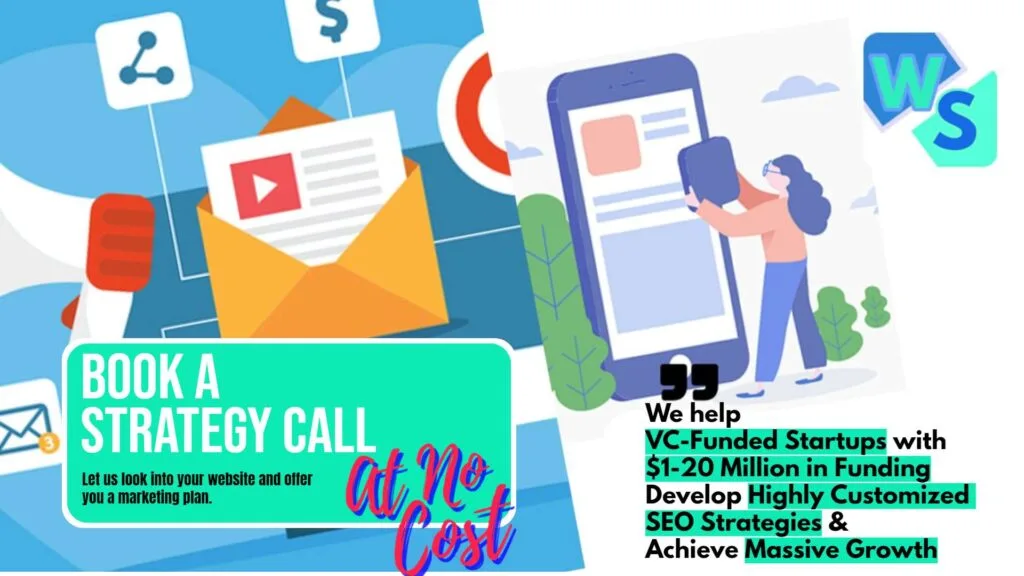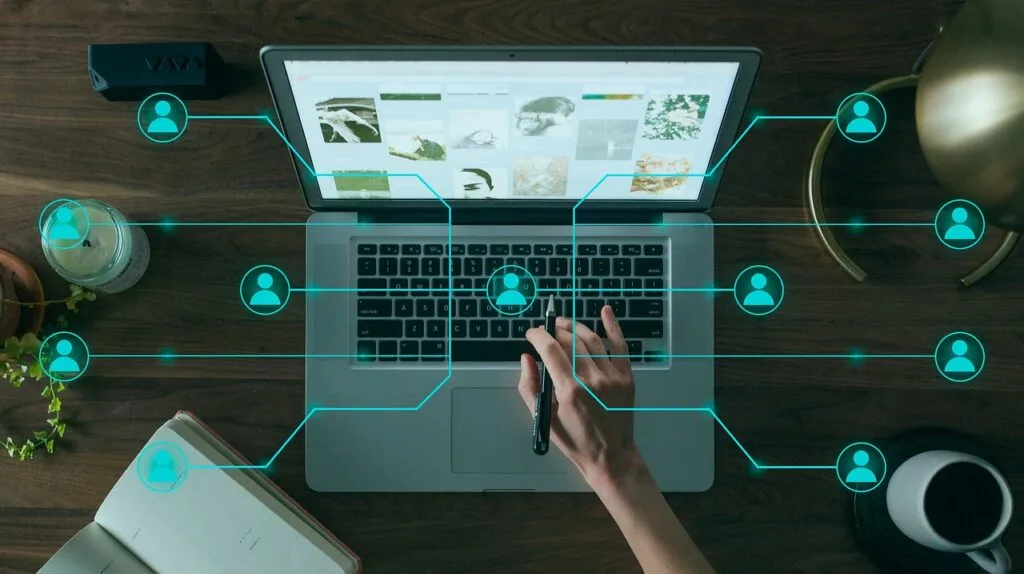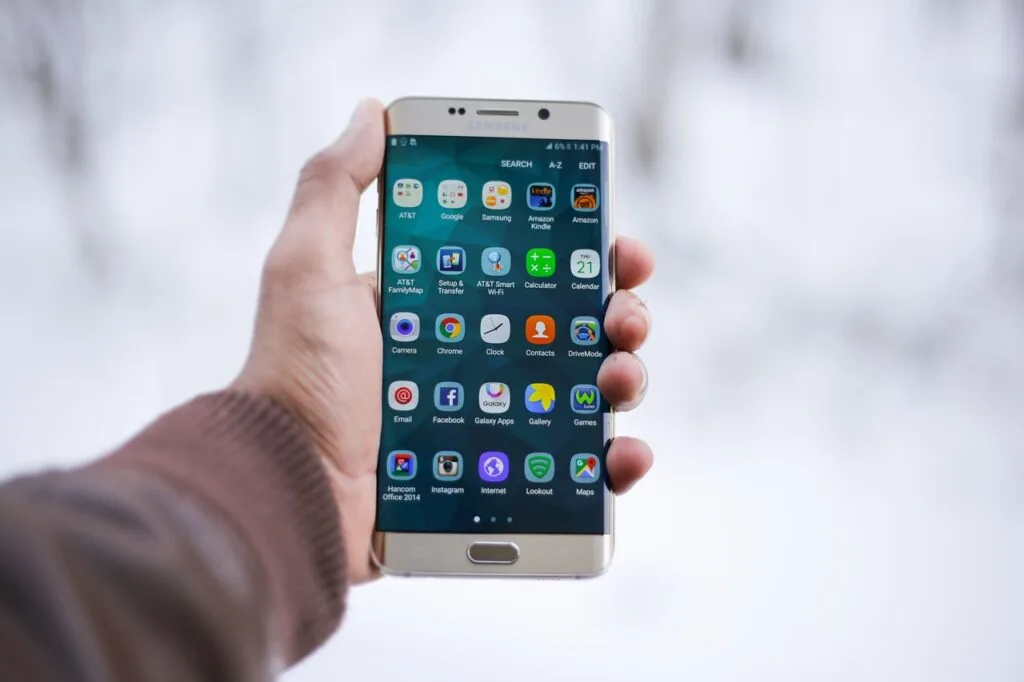This Article has been revised, edited and added to, by Poulomi Chakraborty.
- The Power of Loyalty
- Crafting a Personal Connection
- Rewarding the Repeat Customer
- Creating Brand Ambassadors
- Strengthening Emotional Connections
- Enhancing Customer Lifetime Value
- Leveraging Data for Personalization
- Creating Exclusive Experiences
- Building a Community
- Implementing a Feedback Loop
- Measuring Success and Adapting Strategies
- Cultivating Long-Term Relationships
- Setting the Stage for Success
- Defining Clear Objectives and KPIs
- Understanding Your Audience's Needs and Preferences
- Designing an Intuitive User Experience
- Offering Meaningful and Relevant Rewards
- Ensuring Program Accessibility and Inclusivity
- Communicating the Program Effectively
- Building a Feedback Loop for Continuous Improvement
- Leveraging Technology and Automation
- Aligning the Loyalty Program with Brand Values
- Preparing for Launch and Promotion
- Building an Irresistible Loyalty Program
- Understanding Your Audience
- Structuring Your Program
- Selecting the Right Rewards
- Promoting Your Program
- Designing a Seamless Onboarding Experience
- Utilizing Gamification to Enhance Engagement
- Leveraging Behavioral Insights
- Creating a Multi-Tiered Reward System
- Integrating Social and Community Elements
- Offering Exclusive and Personalized Rewards
- Implementing a Dynamic Rewards Catalog
- Ensuring Transparency and Trust
- Facilitating Easy Redemption Processes
- Monitoring and Optimizing Program Performance
- Encouraging Customer Feedback and Participation
- Engaging and Retaining Members
- Maximizing Impact with Advanced Strategies
- Evaluating and Adjusting Your Program
- The Power of Loyalty Programs in Affiliate Marketing
- Actionable Steps Forward
- Conclusion
Welcome to the dynamic world of affiliate sales, where the landscape is as competitive as it is lucrative. In this bustling marketplace, standing out is crucial for success, and that’s where loyalty programs shine. This isn’t just about offering a one-off discount; it’s about creating a community of repeat customers who trust your recommendations and value the experience you provide. And trust me, in a market saturated with options, that kind of loyalty is worth its weight in gold.
In this guide, we’re diving deep into the art of crafting loyalty programs that not only charm your customers but also significantly bolster your affiliate sales. Whether you’re a seasoned affiliate marketer or just starting, these insights will arm you with the strategies to transform your casual audience into a devoted following, ready to click, buy, and sing your praises. So grab your notepad, and let’s get started on this journey to unlock the potential of loyalty programs in the affiliate sales world.
The Power of Loyalty

Imagine having a friend who knows exactly what you like, shows you just the things you need, and throws in a sweet surprise every now and then. You’d want to hang out with that friend all the time, right? That’s exactly what a good loyalty program does. It transforms your affiliate platform into that friend for your customers.
Crafting a Personal Connection
At its heart, a loyalty program is about building a personal connection. When customers feel recognized and rewarded, they’re more likely to return and make repeat purchases through your affiliate links. Personal touches like birthday discounts, anniversary points, or even a simple ‘thank you’ message can turn a transaction into a relationship.
Rewarding the Repeat Customer
The repeat customer is the unsung hero of your affiliate sales. While one-time buyers are great, repeat customers are your steady income stream. They trust your recommendations enough to come back, and a loyalty program rewards them for this faith. By incentivizing continued purchases, you’re not just increasing sales; you’re fostering a long-term partnership.
Creating Brand Ambassadors
Loyal customers often become brand ambassadors, singing your praises to friends and family. This word-of-mouth marketing is priceless. By offering a loyalty program, you’re not just retaining a customer; you’re potentially multiplying them. A satisfied customer can become a vocal advocate for your brand, bringing in more affiliate traffic than any paid ad ever could.
Strengthening Emotional Connections
A powerful loyalty program goes beyond transactional benefits to forge emotional connections with your customers. These connections are built on shared values, personalized experiences, and genuine appreciation.
When customers feel emotionally connected to your brand, they are more likely to remain loyal, even in the face of competitive offers. To foster these connections, ensure your loyalty program aligns with your brand’s mission and values.
Highlight how your program contributes to causes your audience cares about, such as sustainability or community support, creating a deeper bond with your customers.
Enhancing Customer Lifetime Value
The true power of loyalty lies in its ability to enhance customer lifetime value (CLV). By cultivating long-term relationships, loyalty programs encourage repeat purchases and higher spending over time. T
o maximize CLV, design your program to reward not just purchases, but also engagement behaviors such as referrals, social media interactions, and content sharing. This holistic approach incentivizes a broader range of valuable actions, increasing overall customer engagement and loyalty.
Leveraging Data for Personalization
Data is a critical asset in optimizing your loyalty program. Use customer data to gain insights into purchasing patterns, preferences, and behaviors. This information allows you to personalize rewards and communications, making your program more relevant and appealing.
For example, if data shows that a segment of your customers prefers eco-friendly products, tailor rewards and promotions to highlight these items. Personalization not only boosts engagement but also makes customers feel valued and understood, reinforcing their loyalty.
Creating Exclusive Experiences
Exclusive experiences are a powerful way to differentiate your loyalty program and enhance its appeal. Offer members-only events, early access to new products, or personalized services that make customers feel special and appreciated.
These experiences create a sense of exclusivity and privilege, motivating customers to remain loyal to your brand. Consider partnering with complementary brands to offer unique experiences that add further value to your program and attract a broader audience.
Building a Community
A successful loyalty program fosters a sense of community among its members. Create platforms for customers to interact with each other and with your brand, such as online forums, social media groups, or in-person events.
This community aspect encourages customers to share their experiences, offer support, and celebrate milestones together. A strong community enhances the overall customer experience and builds a loyal, engaged audience that supports your affiliate sales efforts.
Implementing a Feedback Loop
Continuous improvement is essential for maintaining the effectiveness of your loyalty program. Implement a feedback loop to regularly gather input from your members about their experiences and preferences. Use surveys, polls, and direct feedback to identify areas for improvement and new opportunities.
Actively responding to feedback and making adjustments demonstrates that you value your customers’ opinions, further strengthening their loyalty and trust in your brand.
Measuring Success and Adapting Strategies
To ensure your loyalty program remains effective, establish clear metrics for success and regularly analyze performance. Track key indicators such as membership growth, engagement rates, redemption rates, and impact on affiliate sales. Use this data to assess the program’s effectiveness and identify trends or challenges.
Be prepared to adapt your strategies based on these insights, making necessary adjustments to enhance the program’s appeal and effectiveness. Continuous monitoring and refinement will keep your loyalty program aligned with customer expectations and market dynamics.
Cultivating Long-Term Relationships
Ultimately, the power of a loyalty program lies in its ability to cultivate long-term relationships with customers. Focus on building trust, providing consistent value, and creating memorable experiences that keep customers coming back.
A successful loyalty program is not just about rewards; it’s about building a lasting bond with your audience that withstands competitive pressures and market fluctuations. By prioritizing relationship-building, you create a loyal customer base that drives sustained growth and success in your affiliate sales efforts.
Setting the Stage for Success

Before we jump into the nitty-gritty, let’s set the stage. A successful loyalty program in the affiliate marketing space must be:
- Easy to Understand: Keep it simple. The more straightforward your program, the more likely customers will engage with it.
- Valuable: Offer rewards that matter to your audience. A good reward feels like a gift, not a sales pitch.
- Accessible: Ensure that customers from all segments can benefit, not just the high spenders.
- Flexible: Be ready to adapt. A good program evolves based on customer feedback and changing market trends.
Defining Clear Objectives and KPIs
To set the stage for a successful loyalty program, begin by defining clear objectives and key performance indicators (KPIs). Understand what you aim to achieve with your program, whether it’s increasing repeat purchases, boosting average order value, or enhancing customer engagement.
Establishing specific, measurable goals allows you to track progress and make data-driven decisions. Regularly review these KPIs to ensure your program is on track and make adjustments as necessary to meet your targets.
Understanding Your Audience’s Needs and Preferences
A deep understanding of your audience is crucial for designing a loyalty program that resonates. Conduct thorough market research to identify your customers’ preferences, purchasing behaviors, and pain points.
Use surveys, focus groups, and social listening to gather insights directly from your audience. This information will help you tailor your rewards and communication strategies to align with what your customers truly value, increasing their engagement and satisfaction with your program.
Designing an Intuitive User Experience
The user experience is a critical factor in the success of your loyalty program. Ensure that your program is easy to navigate and understand. Create a seamless onboarding process that guides customers through the benefits and mechanics of the program.
Use clear and concise language to explain how customers can earn and redeem rewards. An intuitive user experience reduces friction and encourages participation, making it more likely that customers will engage with your program consistently.
Offering Meaningful and Relevant Rewards
The rewards you offer should be meaningful and relevant to your customers. Analyze purchase data to identify popular products and services that can be included as rewards. Consider offering a mix of monetary and experiential rewards, such as discounts, exclusive access to new products, and special events.
Ensure that the value of the rewards justifies the effort required to earn them. Meaningful rewards motivate customers to participate in the program and foster a sense of appreciation and loyalty.
Ensuring Program Accessibility and Inclusivity
Accessibility is essential for a successful loyalty program. Design your program to be inclusive and beneficial for all customer segments, not just high spenders. Implement tiered rewards to cater to different levels of customer engagement, ensuring that both new and loyal customers can benefit.
Use multiple channels, including mobile apps, websites, and in-store options, to make the program easily accessible. By ensuring that your loyalty program is inclusive, you can maximize its reach and impact.
Communicating the Program Effectively
Effective communication is key to driving participation in your loyalty program. Develop a comprehensive communication strategy that includes email marketing, social media, website banners, and in-store promotions. Clearly articulate the benefits of the program and how customers can participate.
Use personalized messages to target different segments of your audience and highlight rewards that are relevant to them. Regular communication keeps your program top-of-mind and encourages continuous engagement.
Building a Feedback Loop for Continuous Improvement
A successful loyalty program evolves based on customer feedback and changing market trends. Establish a feedback loop to collect input from your customers regularly. Use surveys, direct feedback, and data analytics to gather insights into what is working and what can be improved.
Act on this feedback to refine your program, adding new rewards, adjusting point structures, and enhancing the user experience. Continuous improvement ensures that your loyalty program remains relevant and effective over time.
Leveraging Technology and Automation
Technology and automation can significantly enhance the efficiency and effectiveness of your loyalty program. Use customer relationship management (CRM) systems to manage and analyze customer data. Implement automation tools to streamline processes such as point tracking, reward redemption, and communication.
Leveraging technology allows you to scale your program efficiently and provides a seamless experience for your customers. It also enables you to gather and analyze data more effectively, driving insights that can inform your strategy.
Aligning the Loyalty Program with Brand Values
Aligning your loyalty program with your brand values strengthens the emotional connection with your customers. Ensure that the rewards and experiences you offer reflect your brand’s mission and vision.
For example, if sustainability is a core value of your brand, consider offering eco-friendly rewards or donating a portion of points to environmental causes. This alignment reinforces your brand identity and builds deeper loyalty among customers who share your values.
Preparing for Launch and Promotion
A successful launch is crucial for the initial adoption of your loyalty program. Develop a detailed launch plan that includes pre-launch teasers, a strong launch announcement, and ongoing promotional activities.
Use all available channels to promote your program, ensuring that customers are aware of the benefits and how to join. Consider offering special incentives for early adopters to generate excitement and momentum. A well-executed launch sets the tone for your program and drives early engagement.
Building an Irresistible Loyalty Program

The most successful loyalty programs are those that are thoughtfully designed to create a win-win situation—customers feel valued and marketers see a boost in sales. Here’s how to create that magic formula.
Understanding Your Audience
Before you can offer anything of value, you need to understand who your audience is and what they consider valuable. Dive into your analytics, send out surveys, and engage in social listening to gather this crucial data. Tailored rewards speak directly to your audience’s desires and are much more likely to be used.
Structuring Your Program
Point-Based Systems
A point-based system is the bread and butter of loyalty programs. Customers earn points for purchases made through your affiliate links, which they can then redeem for rewards. The trick is to balance the points so they’re attainable enough to motivate but not so easy to accumulate that they don’t feel special.
Tiered Rewards
A tiered system creates a sense of exclusivity and achievement. As customers climb the ranks, they unlock new benefits. This not only incentivizes more purchases but also encourages customers to aim for higher levels of rewards.
Time-Sensitive Promotions
Creating time-sensitive promotions can generate a sense of urgency. For example, offering double points on purchases made during a certain period can accelerate sales and engage customers who might need a nudge to make a purchase.
Selecting the Right Rewards
The rewards you choose are the heart of your loyalty program. Discounts on future purchases, exclusive content, freebies, or even a donation to a charity in their name can all make customers feel appreciated. Remember, the reward should always align with your audience’s interests and your affiliate niche.
Promoting Your Program
A loyalty program can only boost your sales if people know about it. Use every channel at your disposal—email, social media, your website, and word-of-mouth to spread the word. Clear, consistent messaging ensures that customers understand the program and are excited to participate.
Designing a Seamless Onboarding Experience
The first step in building an irresistible loyalty program is to ensure a seamless onboarding experience for your customers. Simplify the enrollment process by making it intuitive and quick. Use clear and engaging visuals to guide customers through the sign-up steps.
Provide immediate rewards or incentives for joining to create an instant positive experience. This initial interaction sets the tone for your program and encourages continued participation.
Utilizing Gamification to Enhance Engagement
Incorporating gamification elements can significantly increase engagement and make your loyalty program more compelling. Introduce challenges, levels, and rewards that customers can unlock as they engage with your brand.
For example, offer badges or points for completing specific actions such as making a purchase, sharing on social media, or writing a review. Gamification taps into the natural human love for competition and achievement, making the loyalty program more fun and engaging.
Leveraging Behavioral Insights
Understanding customer behavior is critical for designing a loyalty program that truly resonates. Use data analytics to identify patterns and preferences in customer interactions. Tailor your rewards and promotions based on these insights to align with what motivates your audience.
For instance, if data shows that a significant portion of your customers are health-conscious, design rewards that include fitness-related products or discounts on health services. Leveraging behavioral insights allows you to create a more personalized and effective loyalty program.
Creating a Multi-Tiered Reward System
A multi-tiered reward system can add depth and excitement to your loyalty program. Design tiers that offer increasing levels of benefits and exclusivity as customers engage more with your brand.
For example, basic members might receive standard discounts, while top-tier members gain access to exclusive events, early product launches, or personalized services. This structure not only incentivizes continued engagement but also fosters a sense of achievement as customers progress through the tiers.
Integrating Social and Community Elements
Integrating social and community elements into your loyalty program can amplify its impact. Encourage customers to share their experiences and achievements on social media platforms. Create a community space where members can interact, share tips, and celebrate milestones together.
This social aspect not only enhances the sense of belonging but also generates organic word-of-mouth promotion for your program. Consider incorporating features like referral bonuses or social sharing rewards to further leverage the power of community.
Offering Exclusive and Personalized Rewards
Exclusive and personalized rewards can make your loyalty program stand out. Use customer data to offer tailored rewards that reflect individual preferences and behaviors. For example, personalize reward options based on past purchase history or browsing patterns.
Exclusive rewards, such as limited-edition products or VIP experiences, create a sense of privilege and appreciation. Personalized and exclusive rewards enhance the perceived value of your program, driving higher engagement and loyalty.
Implementing a Dynamic Rewards Catalog
A dynamic rewards catalog keeps your loyalty program fresh and exciting. Regularly update the rewards catalog with new and varied options to maintain customer interest. Include a mix of tangible products, digital rewards, and experiential opportunities.
By keeping the rewards catalog dynamic, you prevent the program from becoming stale and continually motivate customers to engage. Highlight new additions and limited-time offers in your communications to create a sense of urgency and anticipation.
Ensuring Transparency and Trust
Transparency is key to building trust and loyalty in your program. Clearly communicate the terms and conditions of your loyalty program, including how points are earned, redeemed, and any expiration policies.
Provide easy access to this information and ensure that it is written in a straightforward and understandable manner. Transparency not only builds trust but also reduces confusion and frustration, leading to a more positive customer experience.
Facilitating Easy Redemption Processes
An easy and efficient redemption process is crucial for customer satisfaction. Ensure that redeeming rewards is straightforward and hassle-free. Provide multiple redemption options, such as online, in-store, or through mobile apps.
Simplify the process by minimizing the steps required and clearly outlining how to redeem rewards. An effortless redemption experience enhances customer satisfaction and encourages continued participation in the program.
Monitoring and Optimizing Program Performance
Continuous monitoring and optimization are essential for the long-term success of your loyalty program. Use data analytics to track key performance metrics such as enrollment rates, engagement levels, redemption rates, and overall impact on sales.
Regularly review this data to identify trends, successes, and areas for improvement. Be proactive in making adjustments to the program based on insights and feedback. This iterative approach ensures that your loyalty program remains effective and aligned with evolving customer needs and market conditions.
Encouraging Customer Feedback and Participation
Actively seeking and incorporating customer feedback is vital for refining your loyalty program. Encourage members to share their opinions and suggestions through surveys, feedback forms, and direct interactions.
Use this feedback to make informed enhancements to the program. Involving customers in the evolution of the loyalty program not only improves its effectiveness but also makes members feel valued and heard, strengthening their loyalty and engagement.
Engaging and Retaining Members
Having set up the foundation of your loyalty program, the next step is to keep your members engaged and retained.
Personalized Communication
Send out personalized communications based on the customer’s behavior and preferences. Celebrate milestones within the program, like when they reach a new tier or are close to earning a reward. This makes the customer feel seen and appreciated, strengthening their loyalty to your program.
Gamification
Incorporate elements of gamification such as badges, leaderboards, or challenges to make the process of earning rewards fun and engaging. This plays on the human love for competition and achievement, keeping customers engaged with your program.

Related: Check out our free SEO suite

Regular Evaluation and Feedback
Keep tabs on how your loyalty program is performing and be open to feedback. Are people excited about the rewards? Are they engaging as you expected? Use surveys and direct feedback to fine-tune the program. Your willingness to adapt and improve will not go unnoticed by your customers.
Leveraging Success Stories
Share success stories of customers who have benefited from your program. Testimonials can serve as powerful social proof, encouraging others to participate and stick with the program.
Maximizing Impact with Advanced Strategies

Taking your loyalty program from good to great requires more than just offering points or rewards; it requires a deep understanding of your customers’ journey and leveraging data to personalize the experience.
Leverage Data Analytics
Data is the compass that guides the ship of affiliate marketing. Utilize customer data to understand buying patterns, preferences, and behaviors. This insight allows you to tailor your loyalty program to not just meet but anticipate customer needs.
Segment Your Audience
Break down your audience into segments based on their activity levels, purchase history, and engagement with the program. This allows you to create targeted campaigns that resonate with each group. For example, you might offer bigger rewards to your most active members to encourage continued loyalty, while you might offer a different set of incentives to those who are less engaged to rekindle their interest.
Personalized Recommendations
Using the data you’ve collected, you can create personalized product recommendations. These recommendations can be based on previous purchases, browsing history, or even the customer’s loyalty program tier. The more relevant the recommendation, the higher the chance of a sale.
Integrate with Social Media
Social media is a powerful tool for promoting your loyalty program and engaging with your customers.
Social Sharing
Encourage your customers to share their rewards and purchases on social media. This not only provides social proof but also spreads the word about your program. Consider offering additional points or rewards for customers who share their experiences with your affiliate brand on their social networks.
Influencer Collaborations
Collaborate with influencers who can help promote your loyalty program. Choose influencers whose followers align with your target audience. An influencer talking about the benefits of your program can lead to a surge in sign-ups and engagement.
Referral Bonuses
Word-of-mouth is a powerful marketing tool. Encourage your loyal customers to refer friends to your program by offering them referral bonuses. This not only brings in new customers but also rewards existing ones, creating a cycle of loyalty and sales.
Seasonal and Themed Promotions
Align your loyalty program with seasonal events or themes. For instance, offer special rewards for holiday shopping or create a fitness challenge for the New Year. This keeps your program dynamic and top-of-mind for customers.
Continuous Innovation
The affiliate market is always changing, and so are customer expectations. Keep innovating and adding fresh elements to your loyalty program to keep it exciting and engaging. Consider new types of rewards, partnership with other brands for cross-promotion, or even gamified elements that introduce a fresh way to earn rewards.
Evaluating and Adjusting Your Program

A loyalty program is not a ‘set it and forget it’ tool. It requires ongoing evaluation and adjustment to ensure it remains effective.
Track Key Metrics
Keep an eye on metrics such as engagement rates, redemption rates, and the impact on sales. These metrics will give you a clear picture of how well your loyalty program is working and where there might be room for improvement.
Solicit Customer Feedback
Regularly ask your customers for feedback on the program. What do they like? What could be improved? This not only provides valuable insights but also makes your customers feel involved and valued.
Test and Learn
Don’t be afraid to test out new ideas. Whether it’s a new type of reward, a change in how points are earned, or a new marketing strategy for the program, testing allows you to see what works best and what resonates with your customers.
Stay Ahead of Trends
Keep an eye on loyalty program trends and best practices within and outside your industry. This can inspire new ways to keep your program exciting and engaging for your customers.
The Power of Loyalty Programs in Affiliate Marketing
Loyalty programs are more than just a set of transactions rewarding customers for their purchases; they are a relationship-building tool. In the competitive landscape of the fitness industry, where workouts and health supplements are sold not just as products but as gateways to a better life, loyalty programs stand as testament to the value that brands and affiliates place on their customer’s journey.
When executed with finesse, loyalty programs can be a dynamic tool that not only boosts affiliate sales but also creates a community of dedicated followers who believe in the value of the products they’re purchasing. The key lies in understanding and catering to your audience, personalizing the experience, and staying adaptable to the ever-changing market trends.
By implementing the strategies discussed, from leveraging data analytics to fostering community through social media integration and continuous innovation, you can develop a loyalty program that resonates with your audience and drives sales. The case studies we explored provide clear evidence of the efficacy of these programs and offer insights into best practices that can be adopted and tailored to your specific needs.
Remember, the most effective loyalty programs are those that evolve. Continuous engagement with your audience, soliciting their feedback, and being willing to test and learn from various strategies will keep your program ahead of the curve. In the world of affiliate marketing, particularly within the fitness industry, loyalty programs can be the differentiator that sets your brand apart and creates a lasting bond with your customers.
Actionable Steps Forward
To wrap up, here are a few actionable steps to take as you embark on or refine your loyalty program:
- Review and Reflect: Assess your current loyalty program (if you have one) or your overall marketing strategy to identify potential for a loyalty program.
- Engage with Your Audience: Use surveys, social media engagement, and direct feedback to understand what your customers want from a loyalty program.
- Start Small but Plan for Scale: Begin with a straightforward program that’s easy to manage but ensure it has the capacity to grow and evolve.
- Use Data Wisely: Collect data at every point and use this to continually refine and personalize the loyalty experience.
- Market Your Program: Use every channel at your disposal to let customers know about your program and its benefits.
- Monitor and Adapt: Keep a close watch on performance metrics and be ready to adapt your strategy to meet the changing needs and preferences of your audience.
By taking these steps, you can set your affiliate marketing efforts on a path of sustained growth through a robust loyalty program. Whether you’re promoting workouts or health supplements, remember that at the core of every transaction is a customer seeking value. Your loyalty program is your opportunity to amplify that value and turn one-time buyers into lifelong advocates.
Conclusion
In the highly competitive world of affiliate sales, loyalty programs emerge as a vital tool for fostering long-term customer relationships and driving consistent revenue growth. By focusing on personalization, meaningful rewards, and seamless user experiences, loyalty programs transform one-time buyers into repeat customers and brand advocates. For startup founders, the key to success lies in understanding your audience, leveraging data to tailor offerings, and continuously evolving your program based on feedback and market trends.
Effective loyalty programs are not static; they are dynamic ecosystems that thrive on engagement and adaptation. By integrating gamification, exclusive rewards, and community elements, you can create a compelling value proposition that resonates deeply with your customers. Additionally, clear communication, transparency, and easy redemption processes build trust and enhance customer satisfaction.
Ultimately, a well-designed loyalty program not only boosts affiliate sales but also strengthens your brand’s relationship with its audience, creating a loyal customer base that drives sustained success. As you implement and refine your loyalty program, remember that its true power lies in its ability to connect, reward, and retain your most valuable asset: your customers.
Read Next
- The Power of Data Analytics in Refining Your Digital Marketing Strategy
- Niche Digital Marketing: Targeting Specific Audiences for Maximum Impact
- Digital Marketing for Local Businesses: Engaging Your Community Effectively
- The Synergy of SEO and Digital Marketing: A Winning Combination
- Digital Marketing on a Budget: Maximizing Impact with Limited Resources






















Comments are closed.